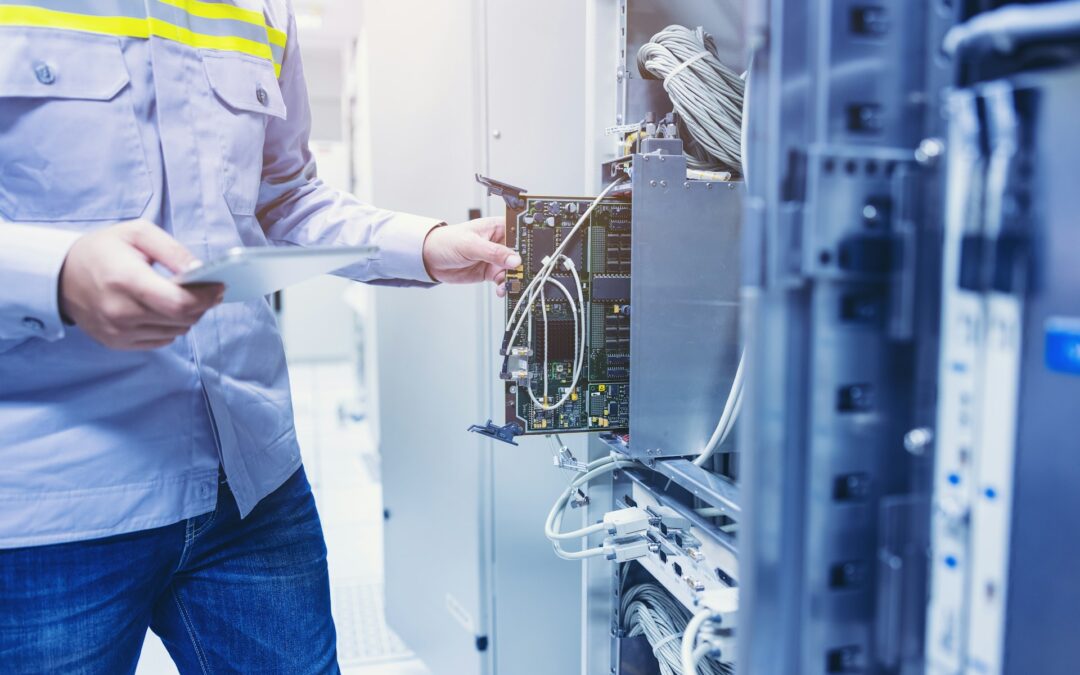Fall in Boston might bring cooler days and colorful trees, but it also comes with a fair share of problems, especially for tech systems that rely on steady conditions to run smoothly. As temperatures shift and storms roll in, network systems are at risk of taking a hit in more ways than one. Business owners often think about stocking supplies or checking heating systems this time of year, but network protection tends to take a back seat. That can lead to bigger problems when equipment is exposed and connections go down.
If your setup includes things like external network boxes, rooftop cabling routes, or server rooms near outside walls, fall weather can sneak in and cause issues. Water seepage, sudden temperature swings, and wind damage are all very real threats to system infrastructure. Preparing now helps stop those problems before they interrupt your business. The more you know about what fall can throw your way, the easier it is to keep your setup working the way it should.
Understanding Fall Weather Risks to Network Systems
Boston’s fall season doesn’t mess around. One day can be warm with clear skies. The next, cold winds and heavy rain move in without much warning. That kind of fast-changing weather can put real strain on tech and gear not designed to flex with the conditions. While some network components live inside protected walls, others are installed along rooftops, building perimeters, or in tight outdoor spaces, right where bad weather hits hardest.
Here’s a short list of what makes fall risky for network systems around Boston:
– Heavy winds can tug loosened cables out of place or wear down clips, mounts, or boxes that weren’t fully secured
– Wet leaves and debris can block ventilation around exterior system units, leading to overheating or reduced performance
– Cold mornings paired with warmer afternoons cause materials to expand and contract, putting stress on cables, connectors, and enclosures
– Long periods of light drizzle can let moisture sneak into weak cable joints or small cracks in housing boxes
– Fluctuating temperatures inside server areas, especially if climate control systems lag behind the weather outside, can disrupt airflow and performance
To give an example, a business located near the Boston waterfront recently experienced several days of bit-by-bit slowdown during October. The reason? A rooftop maintenance hatch had been left slightly ajar after summer upgrades, and light rain was pulling damp air into a wired junction box right below. No full floods, just enough exposure to confuse signal flow and cause dropped connections.
These kinds of network issues might not lead to full outages right away, but they often build up during the season. Before you know it, individual workstations start acting up, dropped calls become more frequent, and cloud backups slow down. Most people don’t think about weather when those things happen, but they should.
Staying ahead of these risks means remembering that network systems don’t operate in a vacuum. They’re part of your building’s real-world environment, and fall weather makes that environment way more unpredictable.
Preventative Measures For Infrastructure Protection
Now’s the time to get ahead of potential damage. With just a little bit of effort before storms roll through or temperatures start bouncing around, you can make your business’s network far more stable. Even if your building is relatively new or well-maintained, small prep steps go a long way toward long-term uptime.
Here are practical ways to protect your infrastructure before fall really kicks in:
1. Check and secure all outdoor cable runs
Look over any exterior wiring, especially if it crosses rooftops or is held by wall-mounted brackets. Make sure ties, brackets, and covers are still in good shape and not pulled loose by birds or weather.
2. Inspect weatherproof seals
Boxes that house junctions or routers outside need solid seals to stay dry. Check for cracking, wear, or loose screws where moisture could sneak in.
3. Trim bushes, branches, and overgrowth near exterior gear
Plants often grow fast in late summer and hang lower into fall. Leaves and branches sitting against boxes or wires trap water and push on things when the wind picks up.
4. Review HVAC setups tied to server or network rooms
Temperature shifts outside should not affect what’s happening indoors. Make sure air handling units are clean, vents are open, and filters are ready to manage the damp, chilly air that fall brings.
5. Use protective covers or shells for exposed connection points
If parts of your infrastructure are out in the open, extra layers like weather hoods or cable wraps can save gear from intense rain or frost.
Keeping these tasks as part of your seasonal prep helps reduce downtime and gives your systems a better shot at staying consistent through all those chilly, wet days. Even something as small as sealing a cable opening can make the difference between a stable, fast setup and recurring connection troubles.
The Role of Professional Installation and Maintenance
Even with regular checks and seasonal tasks, network systems in Boston need more than just visual inspections to stay reliable through the fall. Sometimes what looks fine on the outside is already failing on the inside. That’s why working with trained professionals makes a real difference. They know how to spot early-stage problems and track patterns that most people overlook. Their tools and experience help prevent random outages when the weather turns.
For example, a professional may notice slight corrosion on an outdoor port that still works, but not for long. They can replace or move the line before a storm hits and takes it down completely. They also test the heat ranges in server closets to make sure AC units can handle those back-and-forth October temperature swings. Problems like jittery connections, signal loss, or delayed backups are often linked to things you can’t see without proper testing equipment.
More than that, professionals build systems with local weather in mind. That means choosing materials that don’t dry, crack, or separate when the cold sets in. It also means organizing infrastructure so it works with your building flow, keeping wires off wet concrete or out of direct wind tunnels. These choices play out in fewer service interruptions and more uptime, no matter what kind of week Boston’s weather has in store.
When professionals install and maintain the system, they build in long-term protection. You’re not just reacting to problems. You’re staying ahead of them. Seasonal shifts are easier to manage when an experienced team is watching over your setup.
Benefits of a Weather-Ready Network System
Trying to run a business with unreliable internet, voice interference, or device miscommunication wastes time and creates frustration. Many of these issues tie back to systems that aren’t built or maintained with weather in mind. When your gear is protected and working right, you don’t have to keep calling for fixes or chasing slow connections.
Here’s what you get with a properly protected network system:
– Stronger daily performance. Gear that stays dry and secure works faster and longer
– Fewer service calls. Stable setups mean fewer breakdowns
– Longer cable life. The right insulation keeps moisture and debris from causing wear
– Cleaner wiring. Seasonal maintenance cuts down on damaged housing or poor airflow
– Peace of mind. Less downtime helps you focus on work instead of tech trouble
In places like Boston, where fall weather is unpredictable and harsh, those benefits are worth the upfront effort. Knowing your network is holding steady through wind, rain, and cold mornings brings a level of confidence that’s hard to match.
Weather Can Change Fast, So Should Your Prep
Fall in Boston can be beautiful, but for business technology, it’s no time to relax. If you’ve ever dealt with power flickers, random disconnects, or network slowdowns just as a client call starts, you know how frustrating seasonal changes can be. That frustration usually ties back to weak spots in the system that got worse over time.
Now’s a great moment to prep for the rest of the season. Even if you’ve had no issues so far, the kind of weather that hits between October and November can change fast. Wet leaves clog vents, colder days strain HVAC balance, and one small crack in a seal can lead to a service call. Planning ahead, getting the right gear in place, and having a trusted tech team do the heavy lifting makes fall network headaches a lot less likely.
By keeping systems dry, wiring secure, and airflow steady, you’re taking meaningful steps to keep your business stable and online, even when Boston’s fall weather gets tricky. It’s not about fixing things once they break. It’s about making sure they don’t break at all.
To make sure your network is ready for whatever fall throws at it, partnering with experts who understand local challenges is key. Get the support you need to keep your infrastructure protected and efficient. Turn to ASCIO Wireless for professional help in maintaining reliable network systems. Learn how we can support your infrastructure needs with the right solutions.

